Telling Stories of The Land in Renewable Energy’s Sacrifice Zones
Dates: TBD for 2025.
Ages: 18+. Groups typically have a wide age range.
Group Size: 3-6.
Location: Trout Creek Mountains and Thacker Pass in north-central Nevada.
Housing & Food: Participants will car-camp in remote sites on public lands accessed by rough roads. Fellows bring their own tent. All meals are provided. Participants assist in food preparation.
Tuition: This fellowship is offered with no tuition. Nikki Hill and Groundwork are currently seeking funding to offer small stipends, but that funding does not exist as of January 2023.
Application Deadline: TBD for 2025.
Program Overview
In Nevada’s high desert, two visions for humanity’s future are colliding. On lands where wild foods have been tended for countless generations, the world’s largest lithium mines are being proposed.
Spend the month of April camped with a vibrant group of ecology-minded people, sinking into observations of ecology in the Trout Creek Mountains region. The Mcdermitt Caldera is an ancient volcanic crater that has gained recent attention for the “white gold” known as lithium that is mingled within the high desert soils. This is a region that my mentor spoke of with fondness: a corridor of travel where the long-tended plants still grow in abundance and water can be found. This region is now threatened by multiple lithium exploration claims, to “sustain” a way of living that assumes these deserts are desolate.
The Lithium Lands Fellowship is an endeavor in observation and storytelling, breaking down the mainstream narrative that sees the high desert ecosystem as an obstacle to open pit mines. The high desert is dense with relationships—Shoshone, Paiute, and Bannock peoples have tended semi-wild gardens in this region since time immemorial. With proper storytelling, this region offers an alternative view of how people might relearn to relate with the places we call home. Modernity sees a dead desert, . The land itself tells a different story—one of continued life. As large lithium mining claims are moving toward permitting and breaking ground, everyone should at least know what they are sacrificing in the rush towards electric cars. It’s a true sacrifice: mining is the end of the road for an ecosystem.
The fellowship has 3 main goals: to conduct plant surveys and field press sample specimens; to tell stories of connection in a landscape that is seen to have little value to modernity; and to offer open ended mentorship and space for young people to explore ecology without being told what they should see. The goal is to root observations in connection, while also speaking the language of quantitative data. Bridging worlds like our lives depend on it.
Fellows will conduct professional botanical surveys focusing on Culturally-Important Plants and rare plant species. GPS data will be shared freely and and specimens will be submitted to herbariums in Oregon and Nevada.
Storytelling is central to our work. At Groundwork, we examine the bigger-picture of sustainability, and ask not how to get the next quick fix for an extraction-based society, but how we can lay foundations for multi-generational, mutually beneficial relationships with the Earth. In addition to plant surveys, storytelling can include bird surveys, nature journals, wildlife cameras, and photo collages. Storytelling in this place is about building curiosity. This fellowship explores very different conversations to be had concerning conservation. We see storytelling as a space for future conservation leaders to experiment with the mainstream conservation narratives and to allow insight to grow.
Whether you’re new to Colorado or have lived here your whole life, this course has something to offer you. Join us this year and deepen your relationship with the place where you live.
Program Highlights
- Experience the ecology of the Great Basin and Nevada’s high desert by doing plant surveys in the Trout Creek Mountains and Thacker Pass region.
- Develop your skills of reading landscapes through understanding the different ecotypes according to altitude, geology, hydrology, vegetation, slope, and more.
- Study the lithium boom in the Great Basin and the indigenous and non-indigenous resistance movement seeking to protect the land.
- Study the ethnobotany and ethnohistory of northern Nevada and how the past and present history of the Intermountain West influences the landscape and our relationship with it today.
- Gain an understanding of historical and modern anthropogenic landscapes in Nevada and how we all participate and co-create the ecologies we live in.
- Learn practices of place-making to understand ourselves in relation to our place and how we are all a part of our local ecologies.
- Work on collaborative storytelling projects that position the McDermitt Caldera as a valuable landscape rather than as a site for inevitable future extraction of lithium.
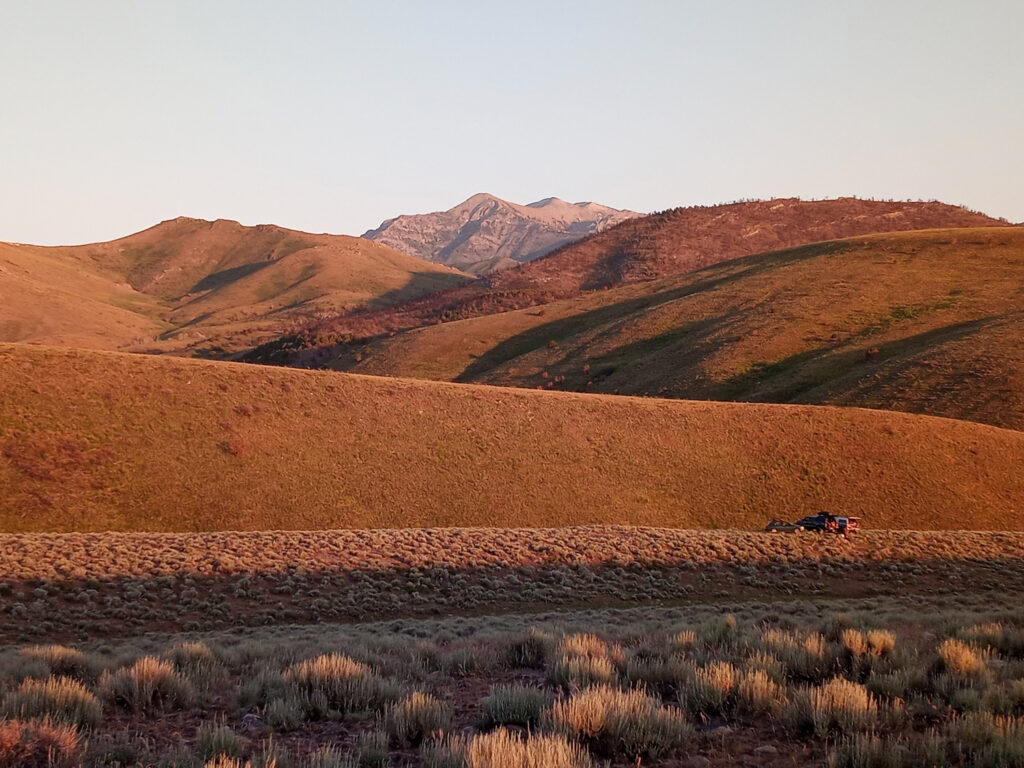
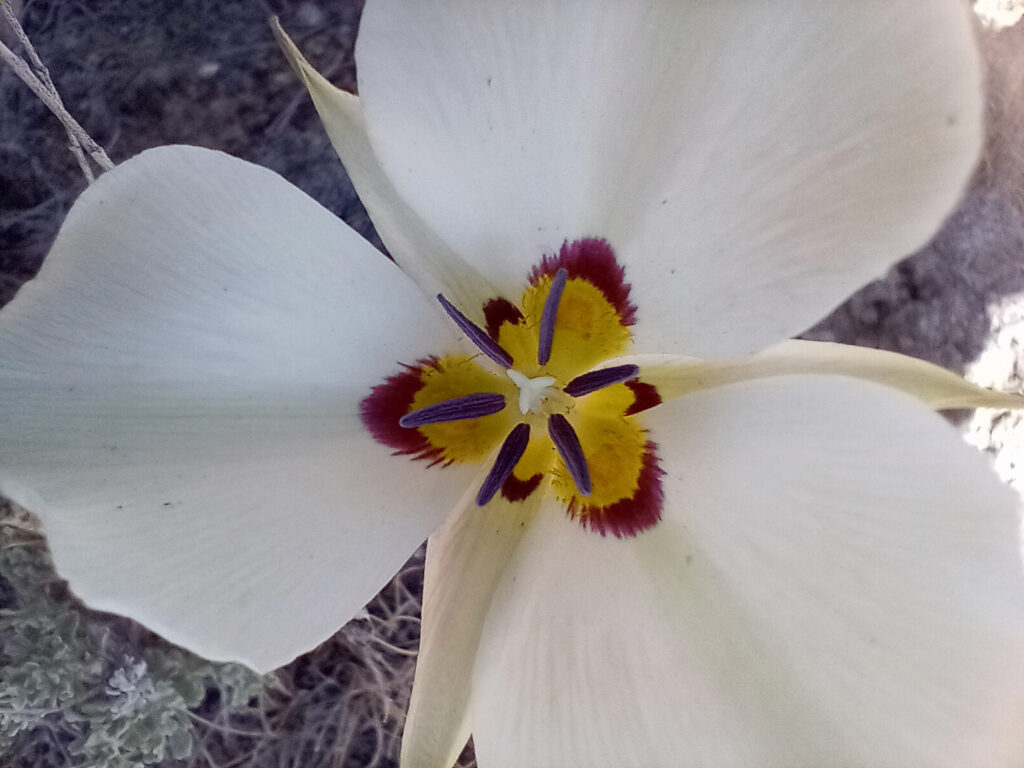
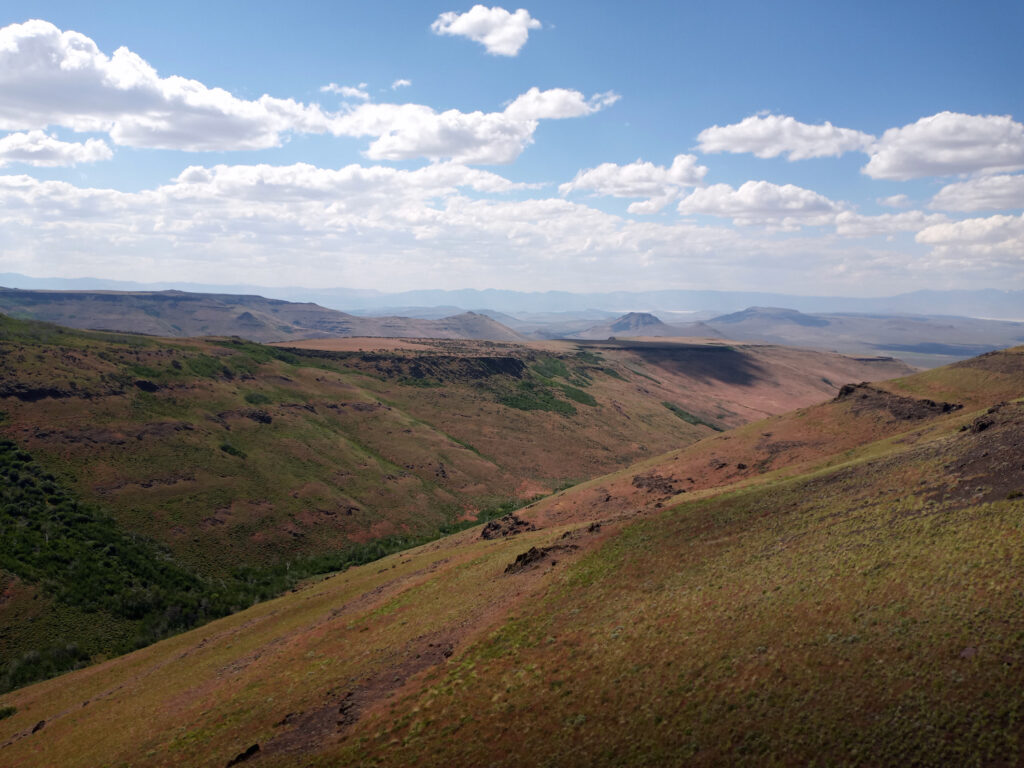
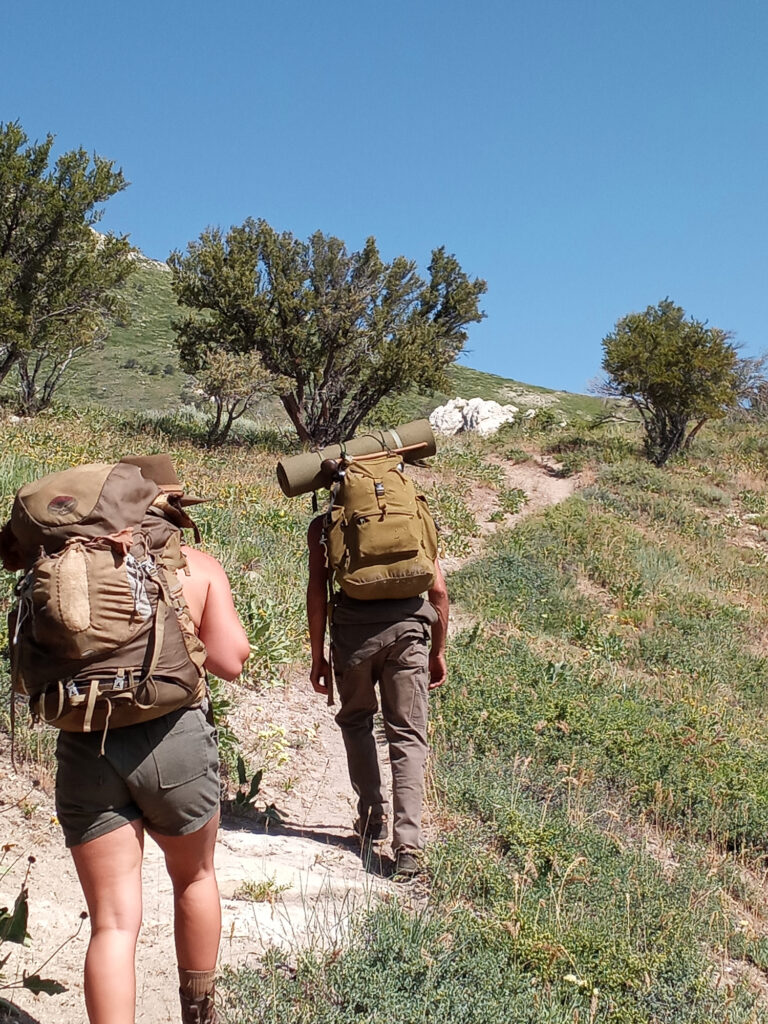
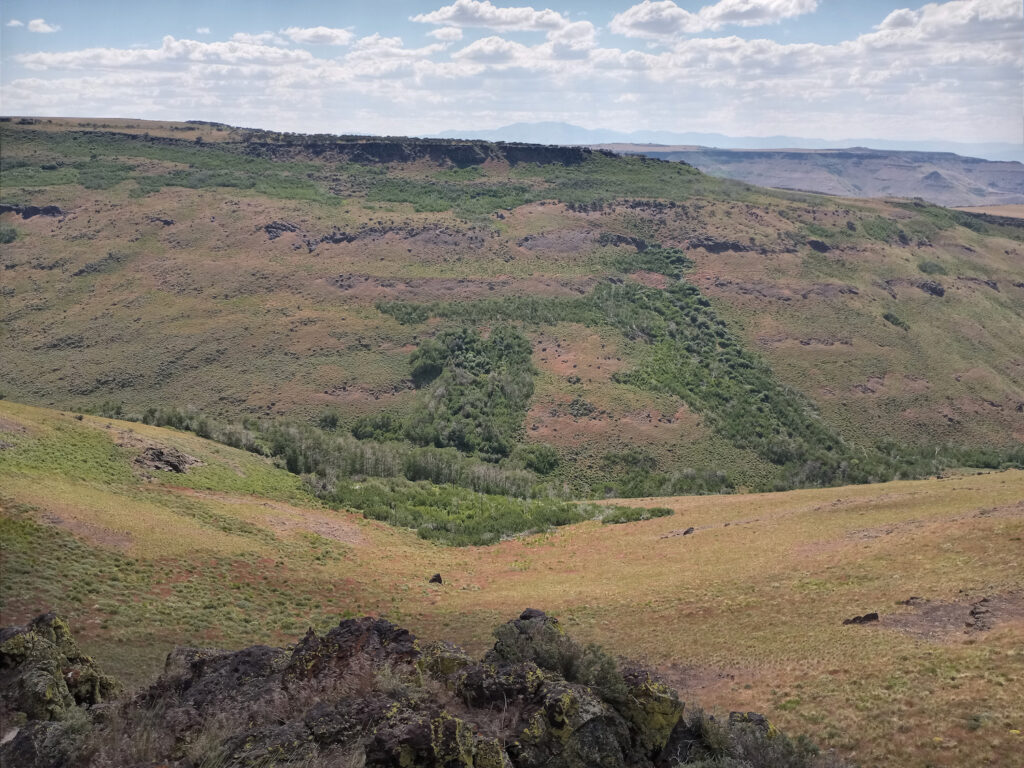
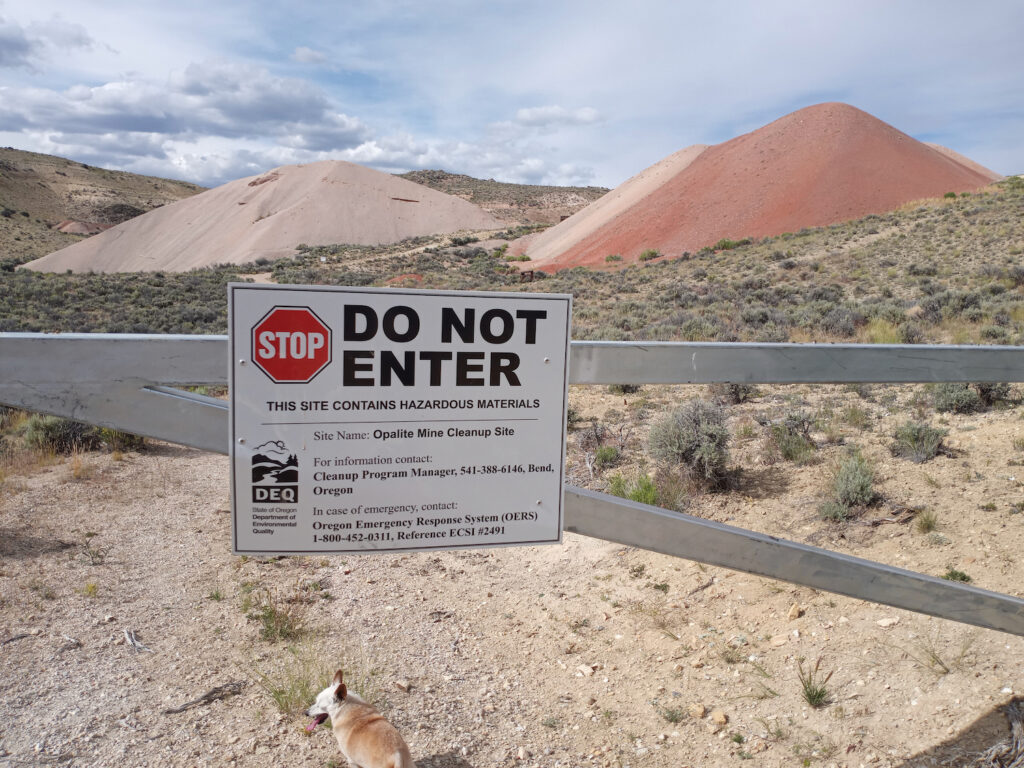
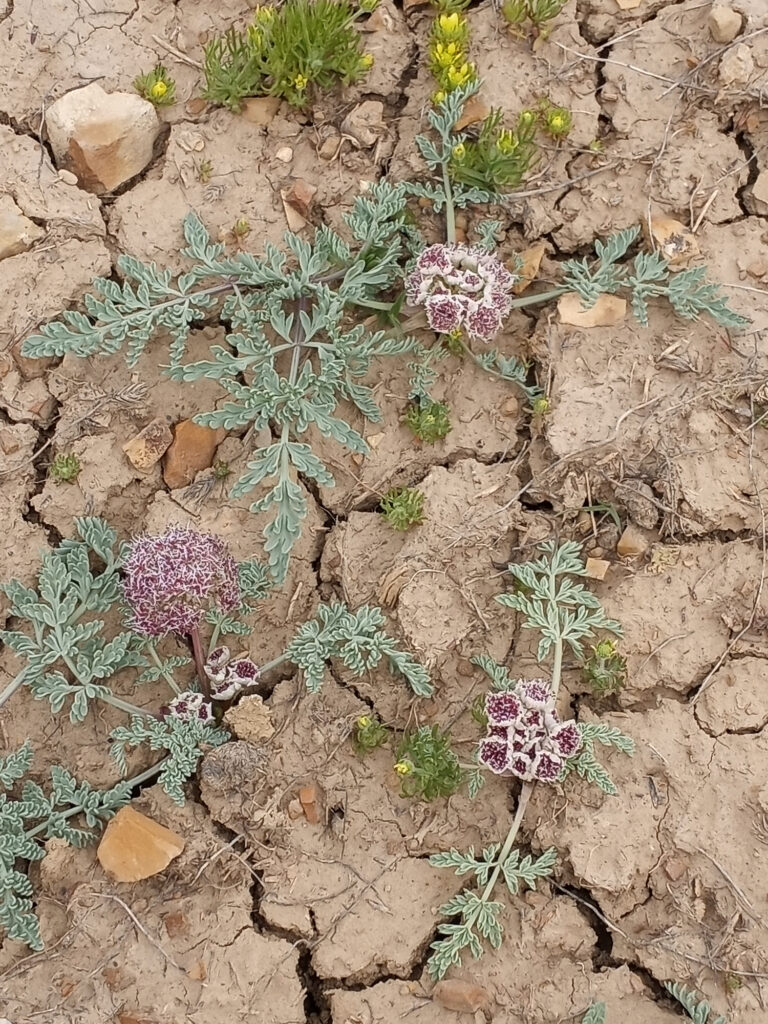
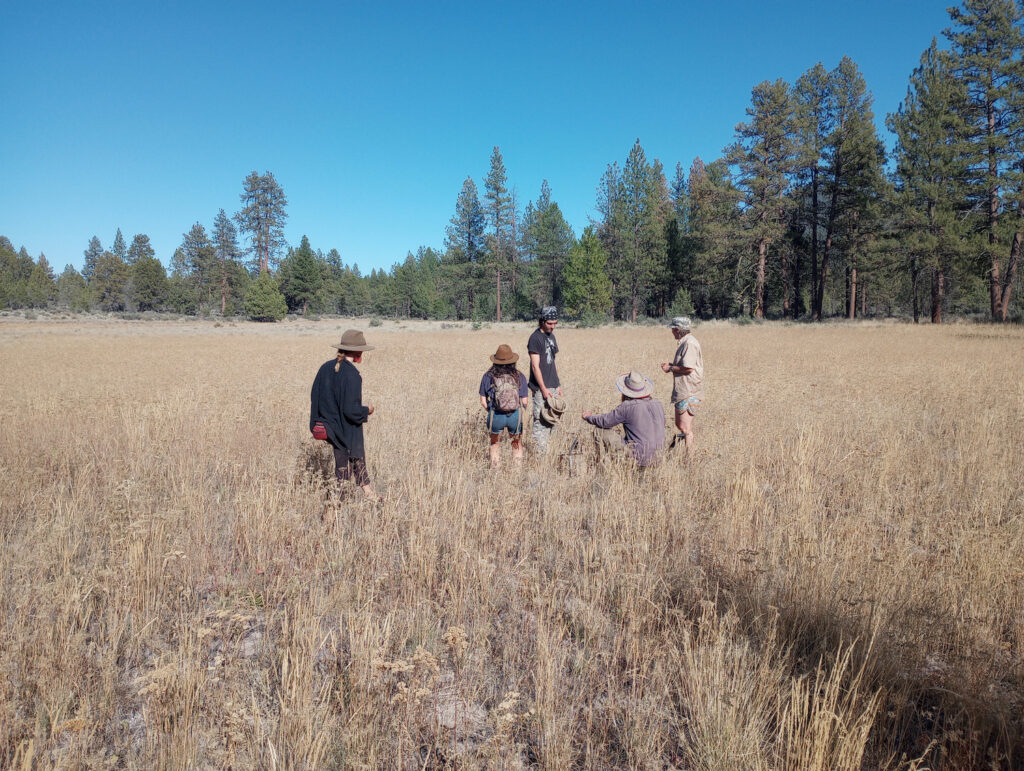
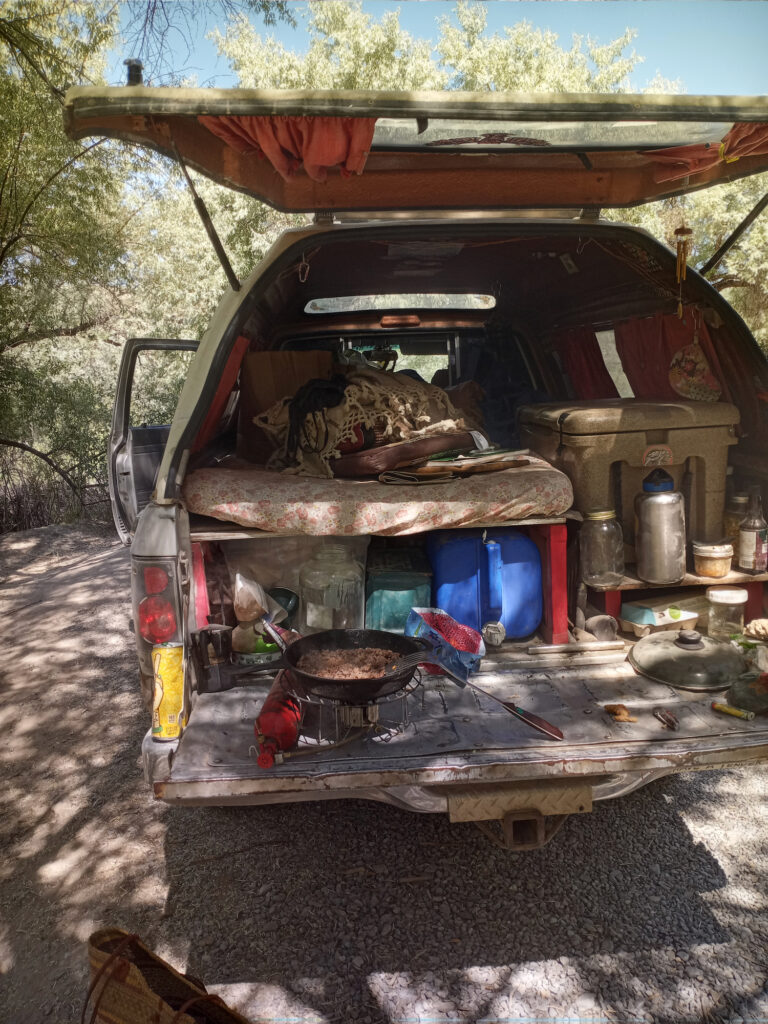
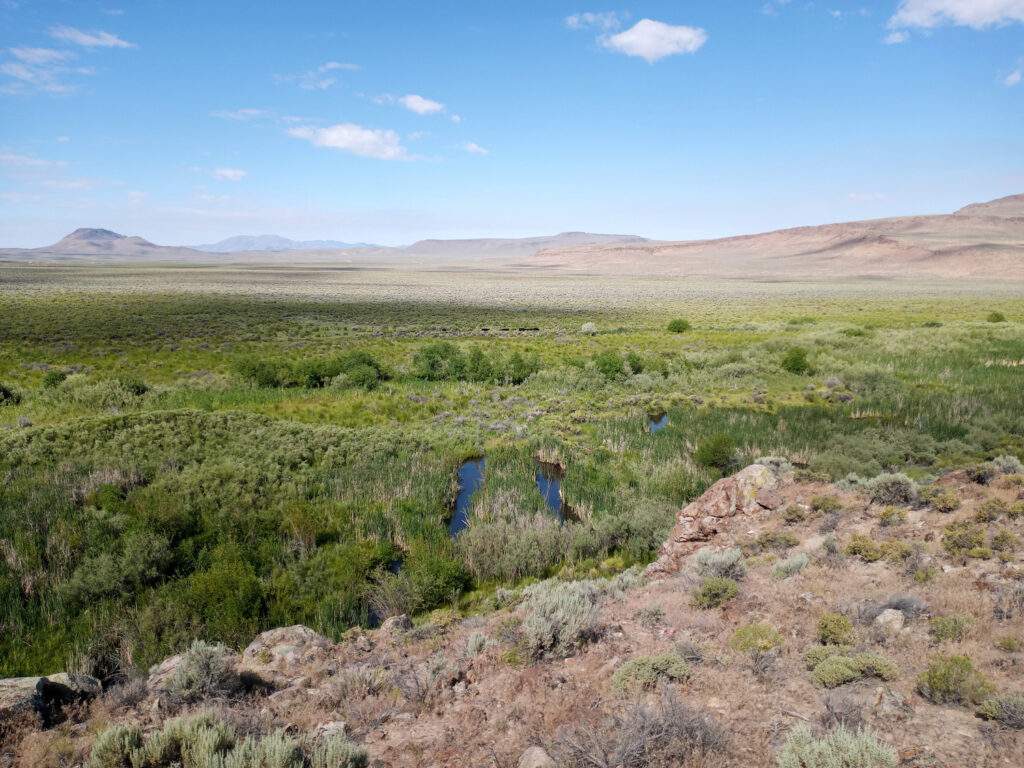
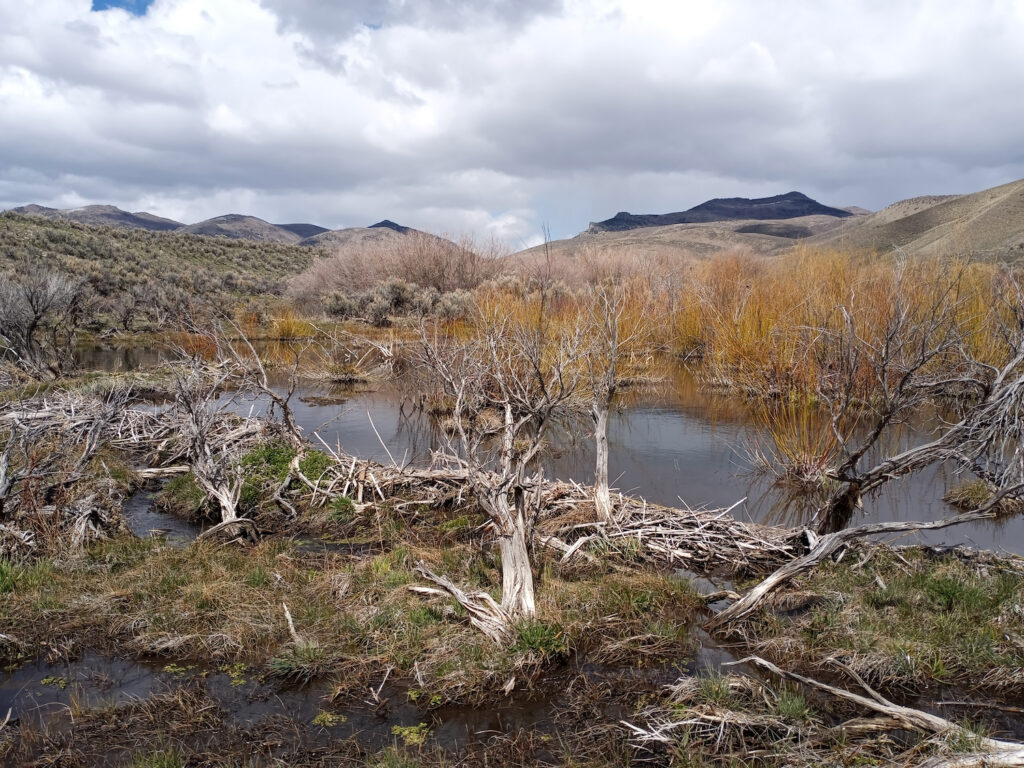
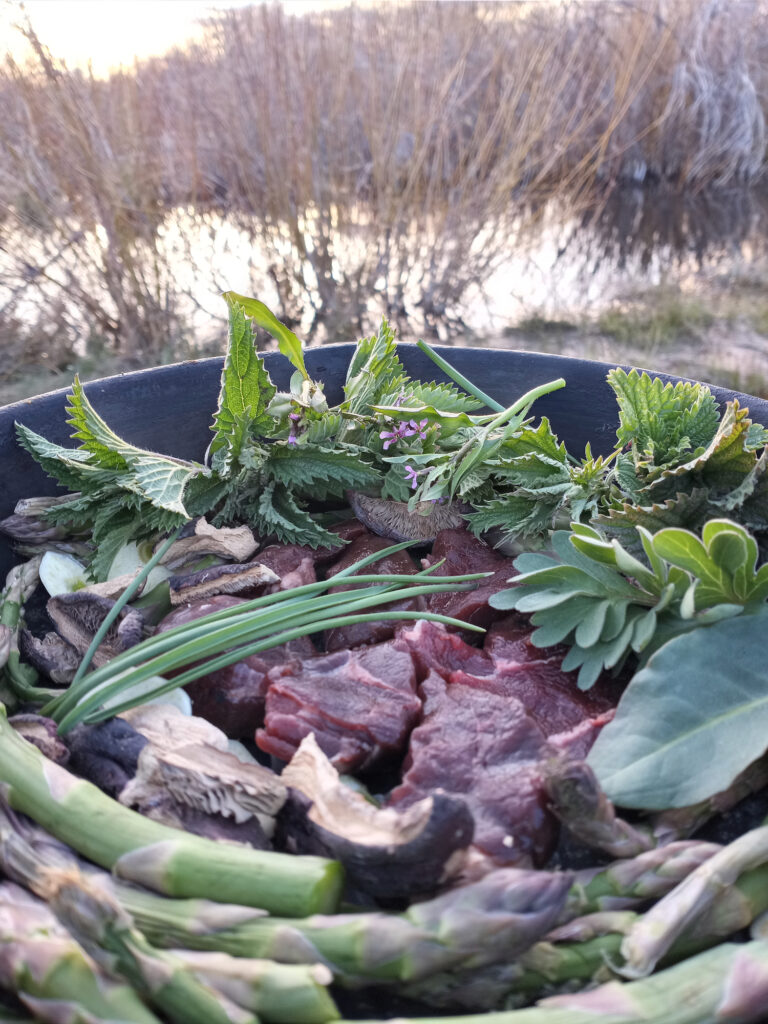
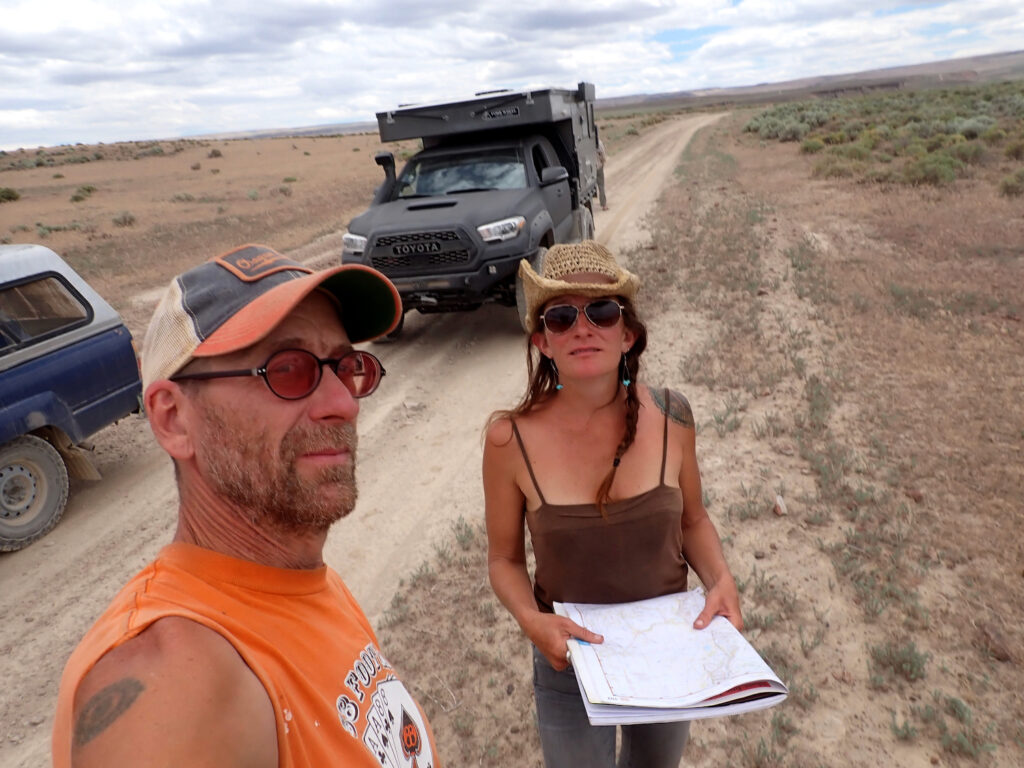
Curriculum
Interview With Nikki Hill: Botany As Archeology
Article: Botany As Archeology to Stop A Lithium Mine by Nikki Hill
Sagebrush sea” is an endearing term that describes the vast high desert steppe lands of western North America. Rolling hills enveloped in silver green shimmer and sparkle like waves in the mid-day sun. This sea that spans the wide valleys and crests over plateaus connects the peaks and ridges from the shores of the Cascades and Sierra Nevada to the Greater Rocky Mountains. It is vast, indeed like an ocean. Nowhere does it ripple more like a sea than in the Great Basin, which coverrs most of Nevada and half of Utah, held by the Wasatch range to the east and the Sierra Nevada to the West, spilling out into the Mojave to the south and well into eastern Oregon in the north.
Many of the desert plants do indeed resemble ocean creatures: coral-like cactus and urchin-like succulents. Although it is commonly thought of as desolate and emptiness, the high desert steppe is incredibly abundant and alive. 350 species of wildlife and insects depend just on sagebrush herself.
The sagebrush sea is one of the largest continuous landscape types in North America, but only 5% of the area receives protection at the federal level, making it the least protected landscape in the USA.
…
The signs of many past relationships can still be seen at Peehee Mu’huh. The patterns of patches of Native American first foods in the area are a living archaeology there, as they are in many other places. Their presence maps a layer of relationship to a landscape: these are plants that have been tended and cultivated for thousands of years in a reciprocal relationship of sustenance as the heart of a traditional lifeway. Many of these plants thrived in response to the human scale disturbances associated with procuring them. The act of harvesting intentionally encouraged the abundance of these food plants around winter camps, along migratory trails, and among rocky areas that were regularly visited. Cultivation was collaborative in this sense, involving humans, animals and the plants themselves, with their specific proclivities, in a seasonal flow following the shapes of the landscape. This kinship with place created a horticulture based in endearment.
Plants & Place Podcast: A Taste of The Lithium Lands Fellowship
In summer 2022, Groundwork instructor Gabe Crawford recorded a 4-episode podcast series on ethnobotany and human ecologies in the American West. Nikki Hill (the instructor for this fellowship) was a mentor for Gabe as he first began to explore the relationship between people and plants, so this podcast is a great introduction to the type of learning you can expect on our Lithium Lands Fellowship. The podcast is available on every podcast platform, or you can listen below!
![]()
![]()
Meet The Instructor
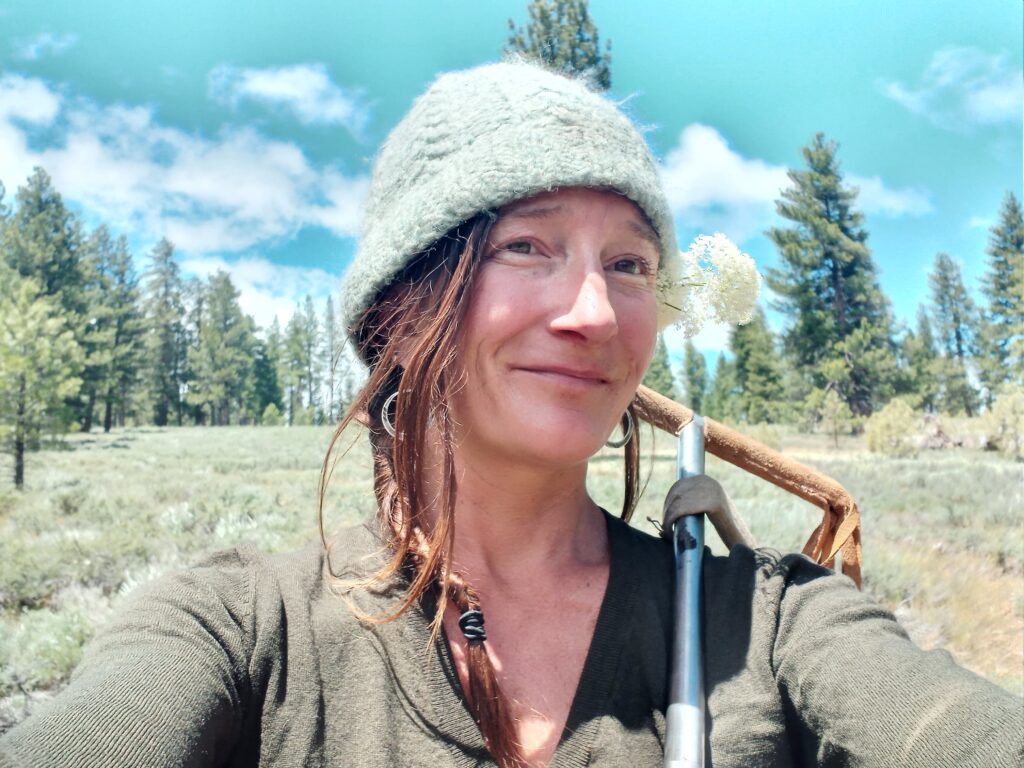
Nikki Hill
Nikki is a seasoned tumbleweed who has been engaged in an ongoing, experiential inquiry of the dynamic weavings of ecological relationships for the past 18 years. She can be found in a diversity of habitats throughout the Western U.S., from remote wild places and feral haunts to boardrooms and stakeholder halls where land management protocols are written. Nikki holds a bachelor’s degree in environmental science and botany and started this journey with a focus on ecosystem restoration. Disillusioned with a focus of eradication as healing, (where herbicides are utilized as the primary tool for restoration), she sought solace in fostering direct connection as a small scale farmer.
For the past nine years she has been living semi nomadically, gathering seeds and tending wild plants, with a focus on plants that benefit from or rely on human disturbance. Nikki’s inspiration for teaching comes from a reclaiming a sense of belonging unfolding curiosities that continue to inspire her include reclaiming the role of human seed bearers, cultural landscape awareness, beneficial disturbance theory, assisted plant migration and remembering the ultimate mystery and joy of this dance. Nikki is a certified Wilderness First Responder.